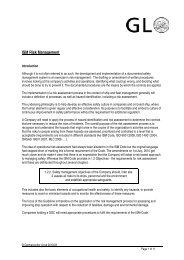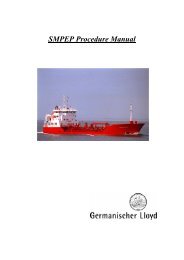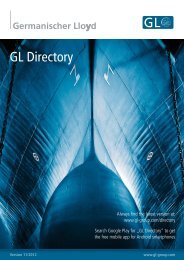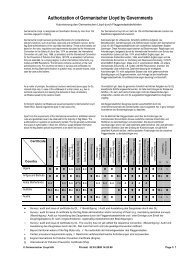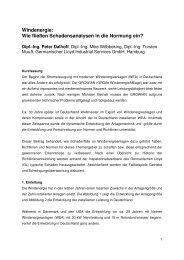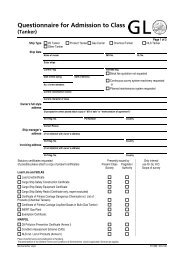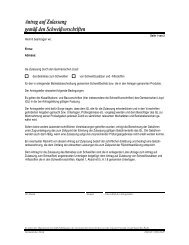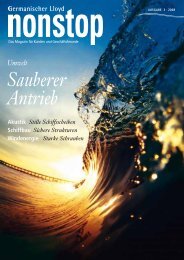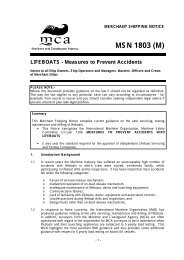Yards Moving Forward - GL Group
Yards Moving Forward - GL Group
Yards Moving Forward - GL Group
You also want an ePaper? Increase the reach of your titles
YUMPU automatically turns print PDFs into web optimized ePapers that Google loves.
Halley also noticed that the winds somehow had to<br />
be connected with rising air after it had been<br />
warmed by the sun. The air heated in the tropics<br />
expands, becomes lighter and rises, whilst at the<br />
same time cooler air from the north or south enters<br />
in exchange. This cooler air, Halley reasoned, was<br />
the cause of the trade winds. The stronger the wind<br />
blows, the greater the pressure difference between<br />
the various air masses must be.<br />
However, there was a physical conundrum<br />
which Halley could not crack: according to his<br />
hypothesis, the trade wind to the north of the equator<br />
should have blown straight from the north and<br />
the trade wind south of the equator directly from<br />
the south. In actual fact, the trade wind north of the<br />
equator blew from the northeast, and the south<br />
trade wind from the southeast.<br />
It was the British physicist George Hadley (1685-<br />
1768), who clarified the matter in 1735. The cool air<br />
from the north moves more slowly than the air at the<br />
equator. When the cool air moves south, it loses<br />
speed in relation to the faster rotation of the earth<br />
from west to east. For this reason, the trade wind<br />
blows from the northeast. The same principle<br />
applies south of the equator, so that the wind there<br />
blows from the southeast. Conversely, air masses<br />
that are displaced from the equator northwards<br />
move comparatively faster than the earth surface<br />
lying below them, which leads to the typical west<br />
winds.<br />
All these observations and meteorological models<br />
were already expressed in mathematical terms in<br />
Beaufort’s lifetime. In 1835, the French physicist<br />
Gaspard- Gustave de Coriolis (1792-1843) calculated<br />
how strongly the circulatory pattern of air currents<br />
between the equator and the poles was influenced<br />
by the earth’s rotation. The fact that each air<br />
current, or even water current, on the northern<br />
hemisphere is deflected to the right and those on<br />
the southern hemisphere to the left is now known as<br />
the Coriolis effect. This force may lead to varying<br />
circular vortices, thus creating storms or hurricanes.<br />
In Beaufort’s time, the Coriolis force had to be taken<br />
into account for the ballistic calculation of artillery<br />
fire, and today it is, for example, considered when<br />
launching satellites. And even in the load calculations<br />
for the growing wind turbines, the deflecting<br />
force of the earth’s rotation must be included in the<br />
calculation: thanks to the Coriolis force, it is quite<br />
possible that, for turbines with a hub height of over<br />
80 metres, a different wind direction will dominate<br />
at the lower blade tip than at the uppermost blade<br />
tip. ■ CG<br />
THE <strong>GL</strong> WIND BEAUFORT SCALE – EDITION 2006<br />
nonstop 3/2006 65






